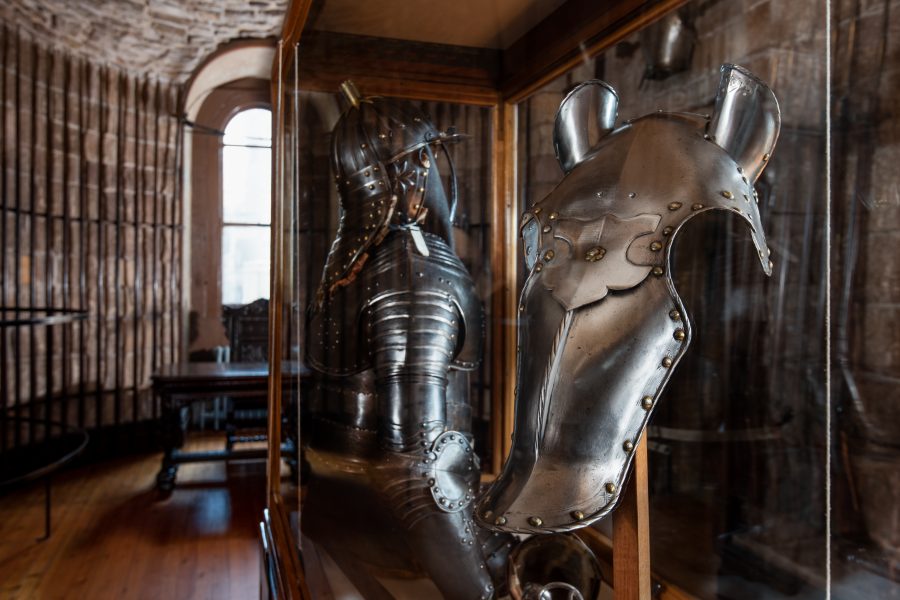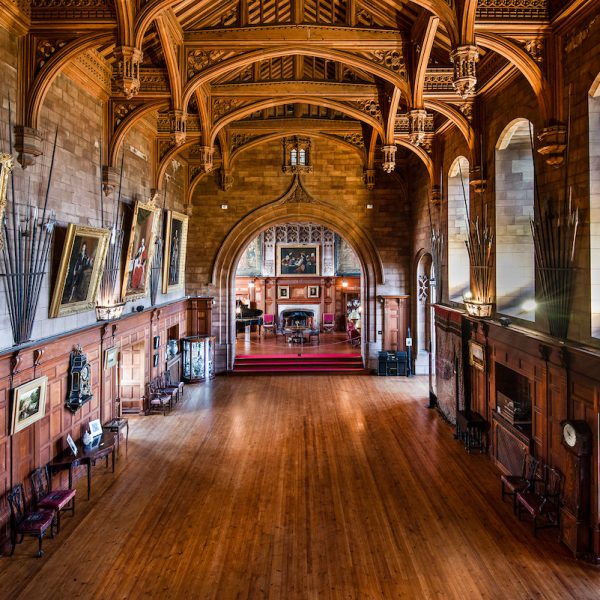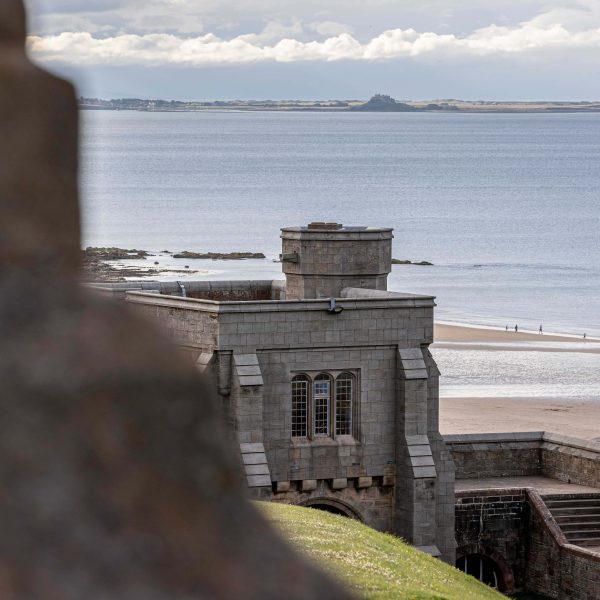Royal Fortress, Norman Stronghold, Coastal Home
Bamburgh Castle has stood guard above the spectacular Northumberland coastline for over 1,400 years. Spanning nine acres of land on its rocky plateau, Bamburgh Castle is one of the largest inhabited castles in the country.
The Legacy of
The Armstrong Empire
Visionary inventor, industrialist and philanthropist William George Armstrong bought Bamburgh Castle in 1894. He set about transforming it into his vision of the archetypal castle. The castle houses his unique collection of artwork, ceramics and objets d’art that Armstrong loved and brought him joy.
Legends, Myths
Ghosts And Dragons
With continual occupation on the castle’s site for thousands of years, Bamburgh enjoys more than its fair share of ghost stories, legends and myths. It is also believed to be the site of Sir Lancelot’s fictitious castle, Joyous Garde.
History
FROM ANGLO SAXON CITADEL TO IMPENETRABLE NORMAN STRONGHOLD
Home to a succession of kings from Henry VI to James 1 and the first castle in the world to fall to gunpowder in the War of the Roses.
A charitable foundation and the coastal landmark that sparked the imagination of William Armstrong.
-
The Anglo Saxon Kings
AD547 – 1066

Bamburgh Castle’s earliest recorded history begins. Northumbria was the largest and most powerful of seven kingdoms. Drawn by its mighty escarpment towering 150 foot above the North Sea and natural harbour the sixth century Kings of Northumbria chose Bamburgh as their Royal capital, calling it Din Guaydri.
-
Ida the Flamebearer
AD547

Ida the Flamebearer and first of the Anglo Saxon Kings of Bernicia lay the first timbers of a fortified wooden stockade and the original stronghold of Bamburgh Castle. Upon Ida’s death, Bamburgh fell into the hands of his grandson, the King Aethelfrith whose children Oswald and his brother Oswi are sent to Iona to be educated and baptised by monks.
-
Cradle of Christianity
634

The most famous of the royal Anglo Saxon lineage, Oswald returned to Bamburgh becoming a Saint King of Northumbria. He lay the very foundations for Bamburgh and Lindisfarne’s title as the cradle of Christianity, bringing St Aidan from Iona to Bamburgh, giving him land on Lindisfarne to build the monastery we know today as Lindisfarne Priory, birthplace of the Lindisfarne Gospels.
-
Bloody Attacks
700 – 993

Wave-upon-wave of bloody attacks unfurl during a century-long invasion on Northumbria by the power-hungry leaders of rival kingdoms. In 993 Vikings ransacked Bamburgh seizing war booty and burning buildings. Viking axes battered the skulls of monks. In return, the English nailed skins flayed from their Danish enemies onto church doors. The fortress of Bamburgh fell into disrepair.
-
Norman Stronghold
11th and 12th centuries
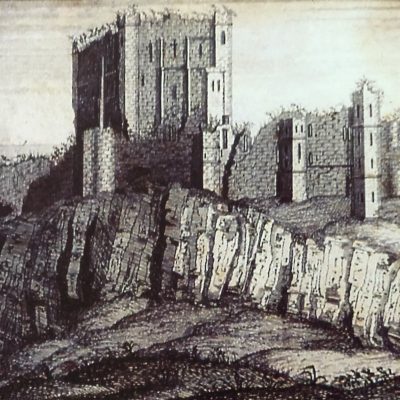
In 1095 Rampaging forces sent by William Rufus, son of William the Conqueror, arrived at Bamburgh and began to wrest power from the Northumbrian Kings. With its close proximity to Scotland, Bamburgh became an important Border garrison, serving as a stronghold and base for warring forays into Scotland. It became the Crown’s strategic English outpost and a mighty Keep is erected. This remains the heart of the Castle today.
-
A Royal home
12th – 15th centuries

Bamburgh served as a palace for monarchs over the coming centuries and was stayed in by John, Henry III, Edward I, Edward II and Edward III. As well as hosting kings, hostages and prisoners were kept in Bamburgh’s Keep including the wounded Scot’s King, David Bruce. Henry III was credited with introducing comfort into the castle including a great hall and glass windows.
-
Wars Of The Roses
1464

Civil War raged across the country during the War of the Roses between the royal houses of Lancaster and York. Bamburgh was home to King Henry VI of the red rose of Lancaster during the Wars and came under devastating cannon fire. After centuries of withstanding every kind of armed assault, Bamburgh became the first castle in England to be destroyed by gunfire.
-
King James I
1610

With the defensive era of castles over, Bamburgh had become a thorn in the side for the Crown. In 1610 James I gifted the castle to Claudius Forster, the castle’s last royal keeper in honour of his long-standing service. Having been a royal dwelling for over 1200 years, Bamburgh passed into private hands. Unable to afford the upkeep of a castle Bamburgh was soon an uninhabitable ruin.
-
The Forster Family
1701

What remained of Bamburgh Castle and its bankrupt estate passed to the last heir of the Forster family, Dorothy. She went on to marry distinguished Bishop of Durham, Lord Nathaniel Crewe. After Dorothy’s death her grieving husband set up a charity in her memory to restore the castle and support the people of Bamburgh village.
-
Dr John Sharp
1757

Upon Lord Crewe’s death a large sum of money was left in trust for the upkeep of the castle. The Crewe Trustees began restoring the castle, directed by trustee Dr John Sharp. The castle became a pharmacy, an out patients’ surgery, a hospital and a free school educating underprivileged children. Meat, milk and coal were distributed to the poor and their crops ground at the castle’s windmill.
-
The First Coastguard
1786

Dr Sharp created a pioneering coastguard system thought to be the first of its kind in the world. He turned the castle into a coastguard station, firing a gun from the ramparts in foggy weather while a watch system and beach patrols were set up and massive iron chains were kept at the ready to haul floundering ships to safety. In 1786 Dr Sharp launched the first ever lifeboat at Bamburgh.
-
William Armstrong
1894

Despite Dr Sharp’s efforts, the castle fell into financial difficulties once more. The decision was made by the Lord Crewe Trustees to put the castle up for sale. William Armstrong had made his fortune producing hydraulic machinery, ships and armaments. He bought the semi-derelict castle for £60,000 with the vision of establishing a convalescent home for retired gentlemen.
-
A Magician’s Genius
1900

Known as the ‘Magician of the North’ in light of his scientific discoveries and pioneering innovations in engineering, William Armstrong was an enlightened environmentalist. An advocate of water and solar power, his manor Cragside in Northumberland was the first house in the world to be lit by hydroelectricity. He died in 1900 and never saw Bamburgh’s final transformation.
-
Restoration Complete
1901

It cost more than one million pounds to carry out the epic feat of restoring of Bamburgh Castle. After William Armstrong’s death, his great nephew, the 2nd Lord Armstrong completed the task, deciding to retain Bamburgh as a family residence.
-
Bamburgh Today
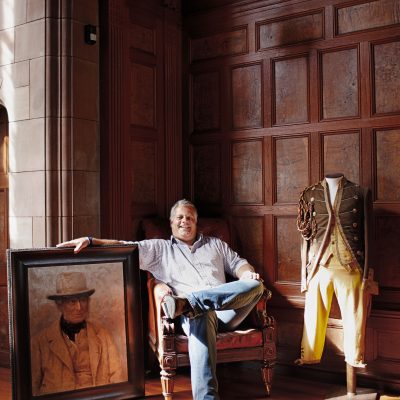
Bamburgh Castle remains the much loved private home of the Armstrong family who are committed to preserving the fortress, its priceless contents and the surrounding Bamburgh Castle Estate. As well as welcoming thousands of visitors each year, the castle hosts weddings, events and self catering holiday accommodation.
INSIDE THE CASTLE


